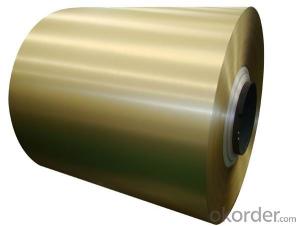Aluminum foil, a material that has become an indispensable part of our lives, is a versatile and essential item in every kitchen. It’s not just for covering dishes anymore; it has evolved into a multi-functional tool that can make your cooking experience more enjoyable and efficient. Let’s dive into the world of aluminum foil sheets and explore their many uses, benefits, and tips for using them in your kitchen.
The Wonders of Aluminum Foil Sheets
A Kitchen Staple
Aluminum foil is a thin sheet of aluminum that is lightweight, flexible, and easy to use. It has become a staple in kitchens around the world due to its numerous applications. From wrapping foods to lining baking sheets, it’s a handy material that can save you time and effort in the kitchen.
Versatility at Its Best
One of the most appealing aspects of aluminum foil is its versatility. It can be used for a wide range of purposes, including but not limited to:
– Wrapping and storing food
– Lining baking sheets and pans
– Covering dishes to keep food warm
– Cooking en papillote, a French cooking technique
– Making homemade aluminum foil packets for grilling or baking
– Reflecting heat in the oven for more even baking
– As a barrier between food and grills or grates
– For crafting and DIY projects in the kitchen
The Benefits of Using Aluminum Foil
Using aluminum foil in your kitchen comes with several benefits that make it a popular choice among home cooks and professional chefs alike. Some of these benefits include:
– It’s non-toxic and safe for cooking
– Provides an even distribution of heat for consistent cooking results
– Prevents food from sticking to cooking surfaces
– Is cost-effective and easy to find in most stores
– Can be recycled, making it an environmentally friendly option
Choosing the Right Aluminum Foil
When it comes to selecting aluminum foil, there are a few factors to consider to ensure you get the best product for your needs. These include:
– Thickness: Foil comes in different thicknesses, measured in microns. Thicker foil is more durable and better suited for heavier-duty tasks.
– Width: Choose the width that best fits your needs, whether you need it for small dishes or large roasting pans.
– Grade: There are two grades of aluminum foil—standard and heavy duty. Heavy duty foil is thicker and more suitable for heavier tasks.
How to Use Aluminum Foil in the Kitchen
Now that we know the benefits and how to choose the right foil, let’s look at some practical ways to use it in your kitchen:
– Food Storage: Use aluminum foil to wrap leftovers or to cover bowls to keep food fresh.
– Baking and Cooking: Line your baking sheets with foil to prevent food from sticking and make cleanup easier. You can also use foil to create packets for steaming vegetables or cooking fish.
– Grilling: Wrap food in foil to prevent flare-ups or to create a barrier between the food and the grill grates.
– Casserole Covers: Use foil to cover casseroles and keep them warm until you’re ready to serve.
– Freezing: Aluminum foil is great for wrapping items for freezing, as it keeps air out and preserves the quality of the food.
– Crafts and DIY: Get creative and use aluminum foil for crafts, such as making bowls or decorative pieces for your kitchen.
Tips for Working with Aluminum Foil
Here are some tips to make your experience with aluminum foil even better:
– Use the dull side of the foil for food contact, as the shiny side can sometimes affect the taste of acidic foods.
– When using foil for cooking, make sure there are no large gaps or openings to prevent food from leaking out.
– To make foil easier to work with, crumple it up and then smooth it out; this will make it more pliable.
– If you’re using foil for grilling, spray it with non-stick cooking spray to prevent food from sticking.
– Always use scissors to cut aluminum foil, as using a knife can cause the foil to fray and create rough edges.
The Environmental Impact of Aluminum Foil
While aluminum foil is a convenient and useful product, it’s important to consider its environmental impact. Here are some ways to minimize this impact:
– Use it efficiently by cutting the right amount you need for each task.
– Recycle your aluminum foil whenever possible. Many recycling programs accept foil.
– Consider using reusable alternatives for some tasks, such as silicone baking mats or parchment paper, to reduce your overall foil usage.
Conclusion
Aluminum foil sheets are truly an essential in every kitchen. They offer a myriad of uses, from cooking and baking to food storage and even crafts. By understanding the benefits, choosing the right type, and using it efficiently, you can enjoy the convenience and functionality that aluminum foil provides while also being mindful of its environmental impact. So, the next time you’re at the store, don’t forget to stock up on this versatile kitchen ally.

